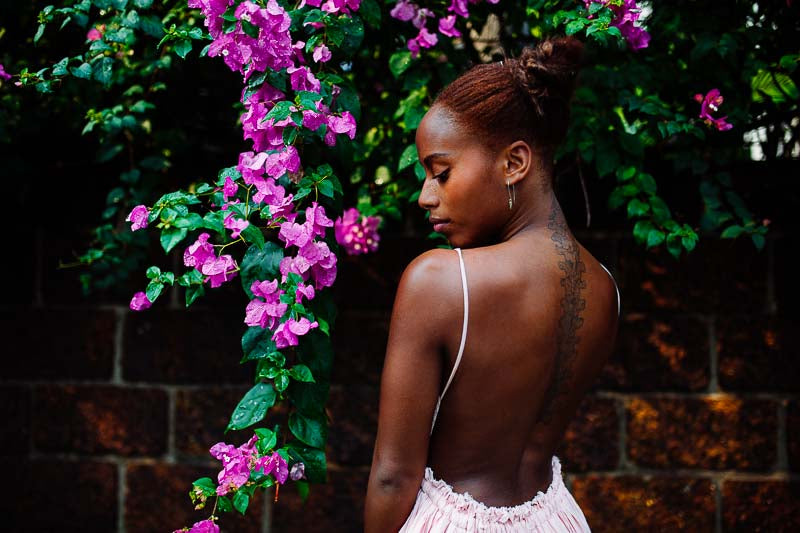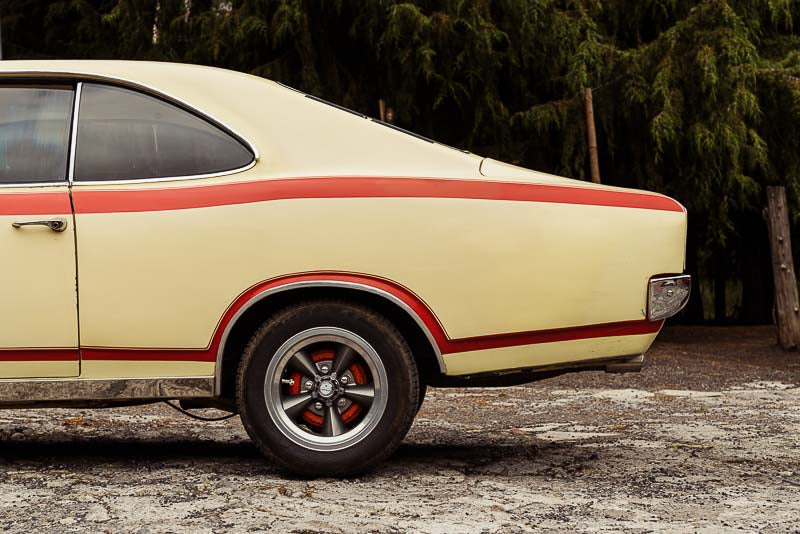The Vintage Slide Film Look is Making a Comeback—Here’s Why

Slide film is another way that the retro photography look is making a comeback and, of course, the team here at Mastin Labs is loving it!
We’re fans of all things film photography, and slide film is no exception. We’ve even created presets for Lightroom that emulate some of our favorite vintage slide films.
If you’re thinking about learning film photography, or you’re trying to achieve a really cool vintage look on your photos, slide film photography is something you might want to look into.
While it still offers that classic, retro film look, there are a few key differences between slide film, “regular” film, and digital photography. Let’s dive in!
What is slide film photography?
Slide film is also known by a couple other names, including color reversal film, transparency film, and E-6.
What is the difference between slide film and color negative film?
You can probably picture the classic rolls of film with images on them, but the colors and tones aren’t accurate to what you see in real life because they are reversed. That is color negative film, also known as C-41.
On the other hand, with slide film, the colors you see on the film strip—also known as a slide—are accurate to real life. You can see how the image is going to turn out just from looking at the slide. You can then load your slides directly into a projector to view them, or scan them to create digital copies or prints.
When it comes to slide film, the process of how the photo is captured and developed is different from color negative film—so the results are different, too.
Why do people use slide film?
Slide film is popular because of its incredible colors, sharpness, and fine grain. There are also different types of slide film which will add different stylistic properties to your photos and impact the way it turns out. Slide film typically comes in 35mm or 120 formats.

However, it can be trickier to capture and process, so it’s not as common as digital photography or even other types of film photography.
Is slide film better than negative?
It’s tough to say whether one type of film is better than another, since it’s all about personal preference. However, slide film is considered a “professional film” because it produces amazing quality images—when you know what you’re doing.
When it comes to comparing slide film vs. negative film, here are a few things to consider:
Benefits of slide film photography (E-6):
- Slide film is known for its vivid colors and fine grain.
- When shot properly, slide film will produce visually striking, lifelike images.
- Ability to see the results of the image on the film slide, before it is developed and enlarged.
- Longer lasting in terms of color stability.
- Unmatched image quality.
- No worrying about how the film lab will process the color in your image.
- For many, the challenge forces them to learn more about their craft and become a better photographer.
Benefits of color negative film photography (C-41):
- Color negative film is more forgiving in terms of ISO and exposure.
- More likely to retain detail in shadows and highlights.
- Great for more even colors, especially in high contrast environments or fluctuating lighting.
- Color negative film is typically less expensive and more accessible than slide film.
- Any kind of film photography is a great way to become a better photographer as it forces you to learn more about your camera settings and think about the image before you take it.
To sum it up, slide film is more difficult to work with, but for those willing to learn and practice, the effort pays off.
Is slide film hard to develop?
Like we mentioned above, slide film is more challenging to work with than color negative film or digital photography.

Is slide film still available?
Yes, you can still buy slide film! But, even though it’s making a comeback, it’s not very commonly used these days.
Some popular slide films aren’t even in production anymore, such as Kodachrome.
The reasons why are understandable. While slide film offers a look that can’t be beat, shooting slide film is expensive, challenging, and simply not practical for many professional photographers these days. And since it’s not in as high of a demand as it used to be, production has slowed, and it can be harder to find both the film and labs to develop it.
Should I try slide film photography?
Slide film can be a great way to experiment, get creative, feel inspired, and become a more skilled photographer. If you’re thinking about trying it, and you’re willing to put in the time and effort to learn how to do it, we say give it a go!
That being said, if you shoot professional wedding photography, family photography, commercial photography, and so on, the advantages of digital photography are tough to argue with.
The good news is that you don’t have to choose just one type of photography! You can experiment with different kinds of film photography while still relying on digital photography for your livelihood.
You can even get the film look on your digital photos—including the vintage slide film look—by using high-quality film emulation presets.
How can I get the slide film look on digital images?
If you’re wondering how to edit your digital photos to emulate the vintage slide film look, we don’t blame you! The good news is that this is achievable with the help of high-quality film emulation presets for Lightroom.
By shooting in RAW, you can use film emulation presets and a few tweaks to alter your digital images to look like real film. When it comes to using Mastin Labs film presets, we teach a specific (and simple) 3-Step Workflow to achieve the desired look on your images.
Mastin Labs Vintage Slide Film Presets
Mastin Labs was very excited to launch the Vintage Slide Film Preset Pack, which includes three of the most popular slide film looks: Velvia 50, Provia 100, and Ektachrome 100.
We’ve been shooting and studying these films for years, and work hard to only bring you the best of the best!
Our Vintage Slide Film Presets for Lightroom and Capture One are perfect for portraits, travel, landscapes, fashion, and more.
Velvia 50 film preset
The Velvia 50 preset offers vibrant reds, muted blue-green tones, and rich color overall. Think landscapes, sunsets, fall colors, and travel photos that pop.

Provia 100 film preset
The Provia 100 preset offers a softer look with higher contrast and subtle magenta tones. Think studio shoots, fashion, and everyday moments with a stylish edge.
Ektachrome 100 film preset
The Ektachrome 100 preset offers warm colors and softer highlights. Think portraits, lifestyle, and fashion shoots with a fun, nostalgic vibe.
Enjoy your slide film photos!
We hope you found this article helpful, and that you enjoy either shooting slide film or using our slide film presets to emulate the look on your digital photos!
Don’t forget to join the Mastin Labs Facebook Community, and tag @mastinlabs in your images if you use our Lightroom film presets!
























